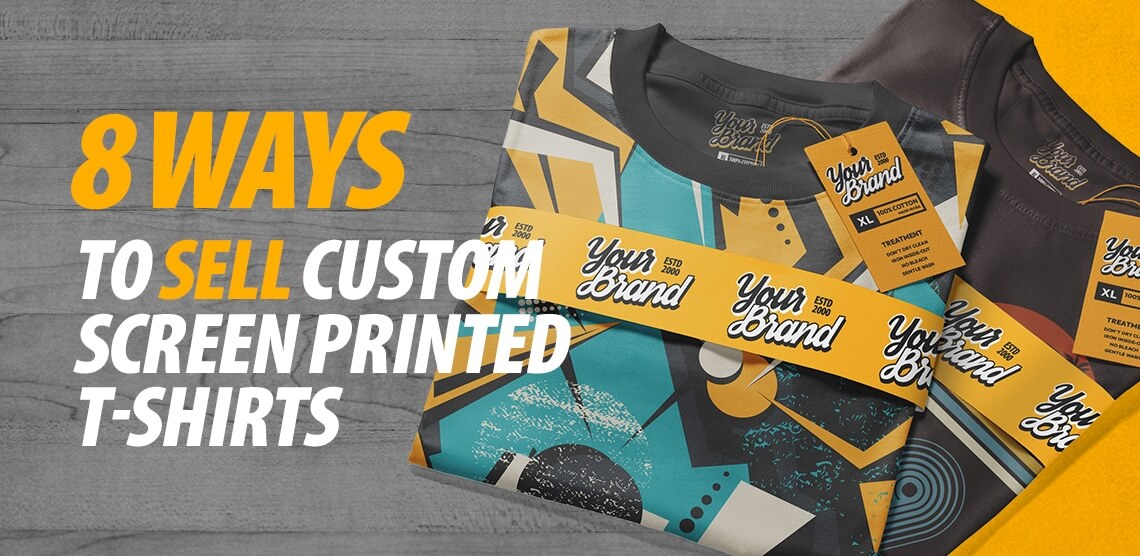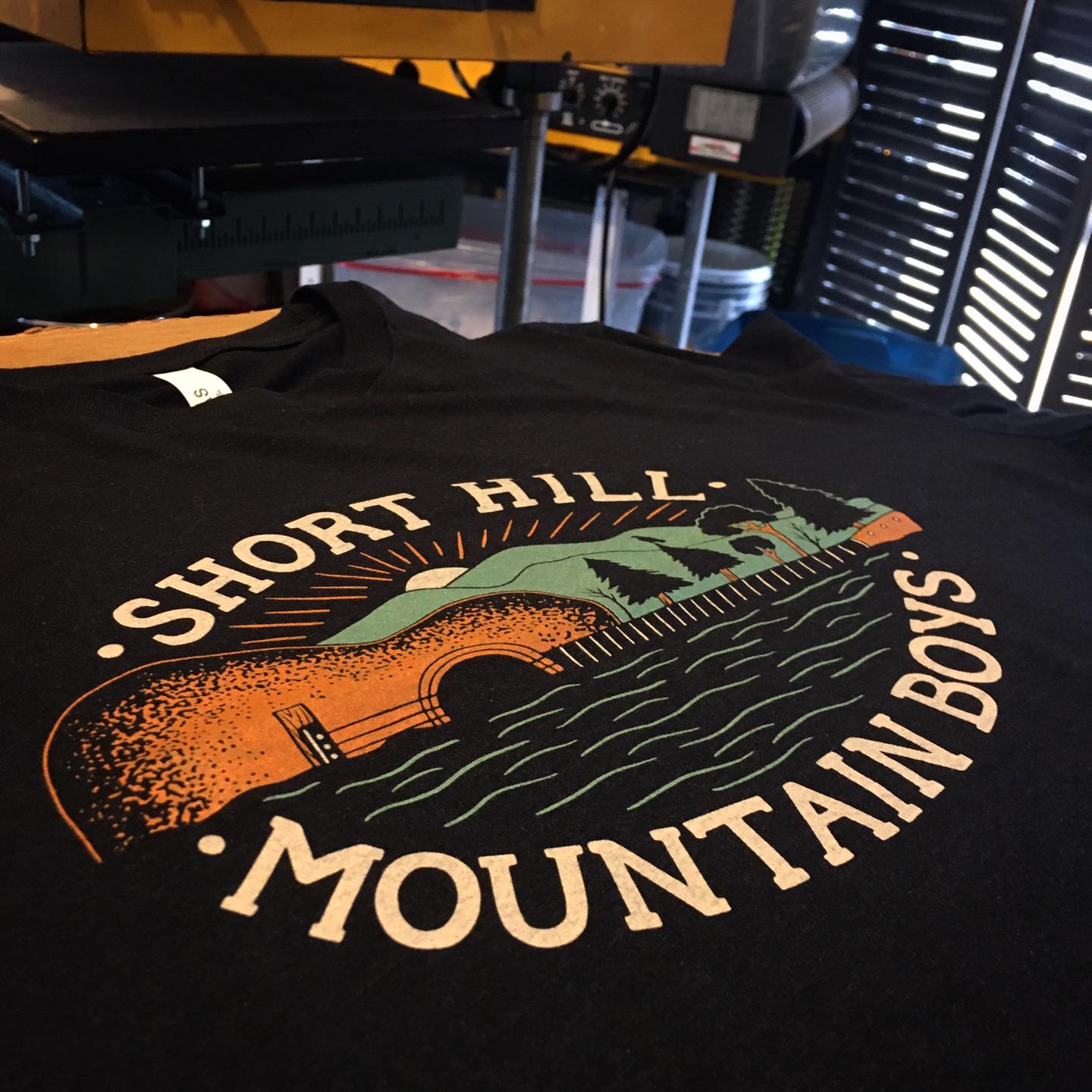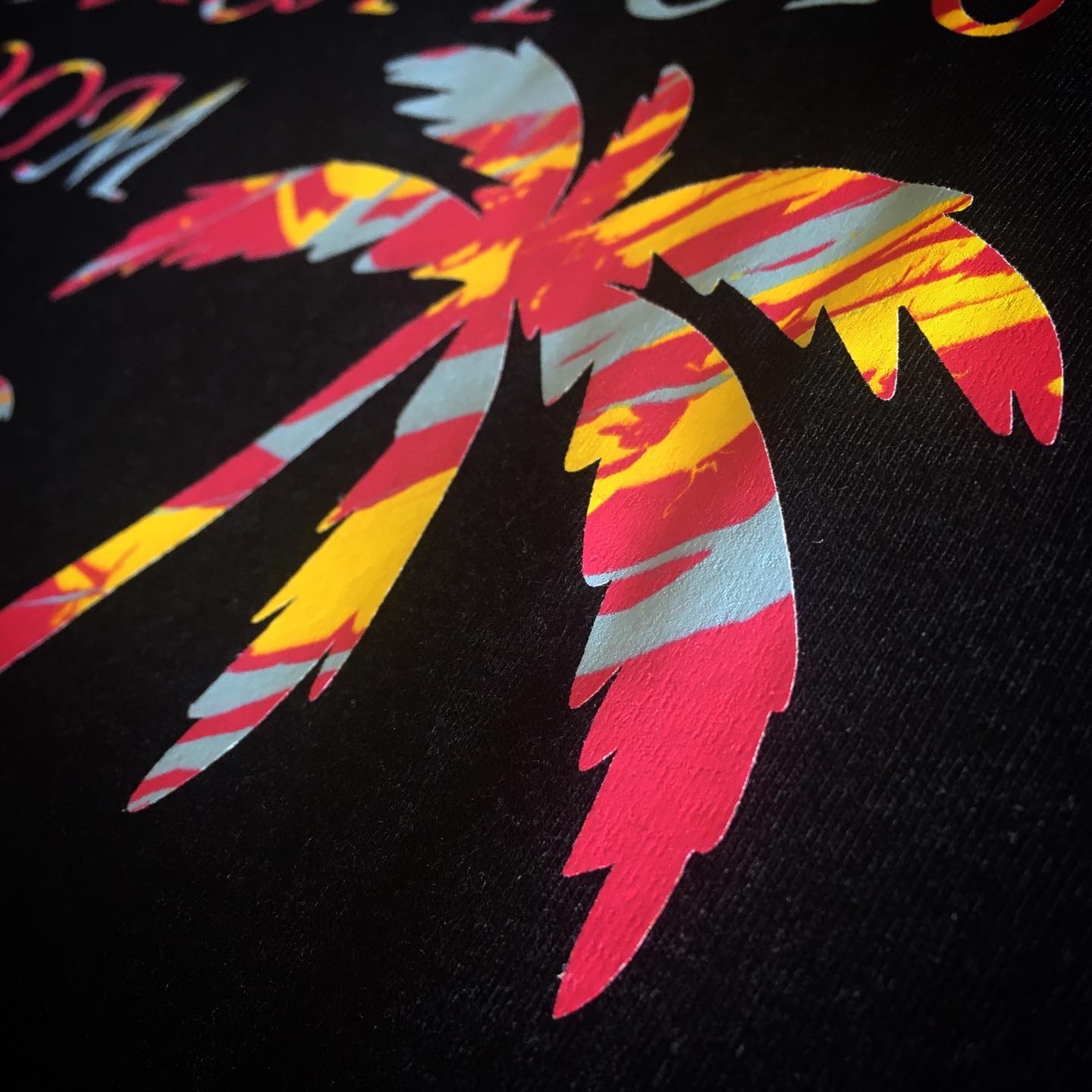Affordable Custom Screen Printing Services for Small Businesses
Affordable Custom Screen Printing Services for Small Businesses
Blog Article
Screen Printing Uncovered: Whatever You Need to Find Out About T-Shirt and Garment Printing Strategies
If you've ever asked yourself exactly how those dynamic layouts wind up on your favorite t-shirts, you remain in the right area. Display printing is an interesting method that integrates art with technique, providing limitless opportunities for creativity. Understanding the fundamentals, from devices to ink selections, can substantially influence your results. All set to explore the important aspects that make display printing an art form? Let's reveal the information that can elevate your jobs.
The Fundamentals of Display Printing: How It Works
When you plunge into screen printing, you'll uncover it's both an art and a science. At its core, screen printing includes developing a stencil, or display, that permits ink to pass through only in particular locations.
Placement the display over the textile, then use a squeegee to press ink with the display onto the garment. Each step is essential, and grasping them will elevate your display printing abilities, transforming straightforward garments into special, expressive items.
Types of Screen Printing Techniques
Once you comprehend the fundamentals of screen printing, it's time to discover the different strategies that can raise your designs. One popular method is traditional display printing, where ink is pressed via a stenciled screen.
If you're intending for great details, think about discharge printing. This method gets rid of dye from the fabric, leaving a soft, vintage look. One more alternative is plastisol printing, known for its sturdiness and vivid shades, making it a favorite for many brand names. Experiment with halftone printing to produce gradient effects and complex styles. Each strategy has its special appeal, so don't wait to attempt them out to find what suits your design best!
Essential Equipment for Display Printing
To achieve magnificent outcomes in display printing, having the best tools is fundamental. You'll require a sturdy display printing framework, which holds the mesh that transfers your style onto the garment. Next off, purchase top quality mops; these are necessary for using ink uniformly throughout the display. You'll likewise need a great exposure unit to create your screens, along with a washout cubicle for cleaning them after usage. A reputable heat source, like a conveyor dryer or warmth press, is crucial for curing your prints to ensure long life. Don't forget an appropriate workspace, furnished with tables and storage for your supplies. Finally, protective equipment, such as gloves and masks, will certainly keep you safe from chemicals and inks. With the right tools, you'll be well on your method to producing professional-quality prints.
Selecting the Right Inks and Products
When picking inks and materials for screen printing, you need to take into consideration the kind of ink that works best for your project. Think regarding material compatibility to guarantee your designs look last and great lengthy. Likewise, explore eco-friendly ink choices to make your printing procedure extra sustainable.
Kinds of Display Inks
Picking the right screen ink is necessary for accomplishing dynamic, resilient prints that fulfill your project's demands. There are a number of kinds of display inks to analyze. Specialty inks, such as glow-in-the-dark or metal, can include distinct impacts to your designs.

Fabric Compatibility Considerations
Understanding textile compatibility is essential for attaining premium display prints, specifically considering that various materials respond distinctly to various inks. Always test your inks on example fabric to assure they adhere properly and maintain color stability. Furthermore, maintain in mind that fabric weight and texture can impact the last end result, so picking the right ink and product combo is important for your job's success.
Eco-Friendly Ink Options
Environment-friendly inks are becoming a preferred choice for display printers who intend to minimize their ecological effect while keeping quality. When picking inks, take into consideration water-based inks, which are less dangerous and less complicated to cleanse up compared to traditional solvents. These inks bond well with fabrics, delivering vibrant results without poisonous chemicals. You may likewise discover eco-solvent inks that use less volatile natural substances (VOCs), making them a more secure choice for both your health and the earth.
Furthermore, search for inks made from renewable resources, such as soy or vegetable-based choices. By choosing the right inks and materials, you'll not only create sensational styles however additionally add to a more sustainable printing process. Make the button, and your prints will reflect your dedication to the setting!
Preparing Your Style for Display Printing

Submit Layout Needs
To assure your layout looks vivid and sharp on material, you'll need to pay close focus to submit layout requirements for display printing. Make certain your layout has a clear history to stop unwanted white sides on your prints. Maintain color settings in mind; CMYK is conventional for display printing, so convert your RGB creates as necessary.
Color Separation Strategies
Shade separation is a vital step in preparing your layout for screen printing, and grasping it can greatly improve your print high quality. You'll require to break your style into specific shades, as each color calls for a separate display during find printing. Begin by determining all the colors in your layout and develop layers each. You can use software program like Adobe Photoshop or Illustrator to separate and different colors successfully. Be specific to save each layer as a different documents, generally in a layout like TIFF or PSD. This accuracy not only guarantees accurate color depiction however additionally streamlines the printing process. By paying focus to color separation, you'll accomplish expert and lively lead to your screen-printed garments.
Resolution and Size
Achieving the finest outcomes in display printing begins with ensuring your layout has the appropriate resolution and dimension. Preferably, your artwork must be at the very least 300 DPI (dots per inch) for sharp, clear prints. Your last product could look unprofessional and pixelated. if you use lower resolution.
When it pertains to dimension, consider the dimensions of your print area. Design your art work to match the final print size, ideally developing it in the real measurements you'll be publishing. In this manner, you'll prevent any kind of unexpected scaling problems.
Constantly examine your layout in both vector and raster formats. Vector graphics can be scaled without losing quality, making them ideal for display printing. Preparing correctly will ensure your layout looks fantastic on every garment!
Step-by-Step Display Printing Process
Screen printing is a vibrant procedure that enables you to develop vivid styles on different surface areas. To get begun, you'll require a screen, emulsion, and your picked ink.
Pour ink onto the display and make use of a squeegee to push the ink with the look here pattern onto the fabric. Raise the screen about his meticulously and allow the print dry. You have actually successfully screen printed your style.
Tips for Effective Screen Printing Projects
While you're diving right into your screen printing projects, keep in mind that prep work is essential to success. Start by collecting all your products-- inks, screens, mops, and garments. A clean work space aids prevent undesirable mistakes, so clean before you start.
Next, validate your art work is high-resolution and appropriately sized for your garment. Evaluate your display for correct direct exposure and tidy it thoroughly to prevent spots. When mixing your inks, follow the maker's standards to accomplish the ideal consistency.
During printing, use also pressure with your squeegee for constant outcomes. Don't rush; take your time to validate each print meets your standards. After printing, let your garments completely dry completely prior to managing or packaging them.
Finally, always keep an example of your benefit future recommendation. By doing this, you can assess your development and enhance your strategies with time. Pleased printing!

Often Asked Concerns
The length of time Does It Require To Establish up a Screen Printing Job?
Establishing up a screen printing task usually takes around half an hour to an hour. You'll prepare the screens, mix inks, and adjust journalism. The moment varies based upon complexity and experience, so remain organized!
Can I Publish on Different Fabric Types Making Use Of the Very Same Method?
Yes, you can publish on different material kinds utilizing the exact same method, but you'll require to change your inks and settings. Some textiles soak up ink differently, so exploring assurances the most effective results for each and every product.
What Prevail Mistakes to Prevent in Display Printing?
When display printing, avoid common mistakes like using the wrong ink, neglecting correct exposure times, or avoiding pre-press checks. Constantly test your setup and maintain tidy screens to assure top quality outcomes each time.
Just How Can I Effectively Tidy and Preserve My Display Printing Devices?
To effectively clean and maintain your display printing tools, you ought to consistently wash displays with appropriate solvents, check mops for wear, and assure all devices are stored dust-free and dry. Consistency improves and prevents expensive repair services efficiency.
Is Display Printing Eco Friendly Compared to Various Other Approaches?
Display printing can be much more environmentally pleasant than various other approaches, particularly if you make use of water-based inks and eco-conscious materials. By picking lasting materials and techniques, you minimize waste and reduce your influence on the world.
Display Printing Uncovered: Whatever You Need to Know About Tee Shirt and Garment Printing Methods
At its core, display printing entails producing a stencil, or display, that allows ink to pass with only in specific locations. Setting the display over the fabric, after that utilize a squeegee to press ink through the display onto the garment. One prominent method is typical display printing, where ink is pushed via a stenciled screen.When choosing inks and materials for display printing, you need to take right into account the type of ink that works best for your job.
Report this page